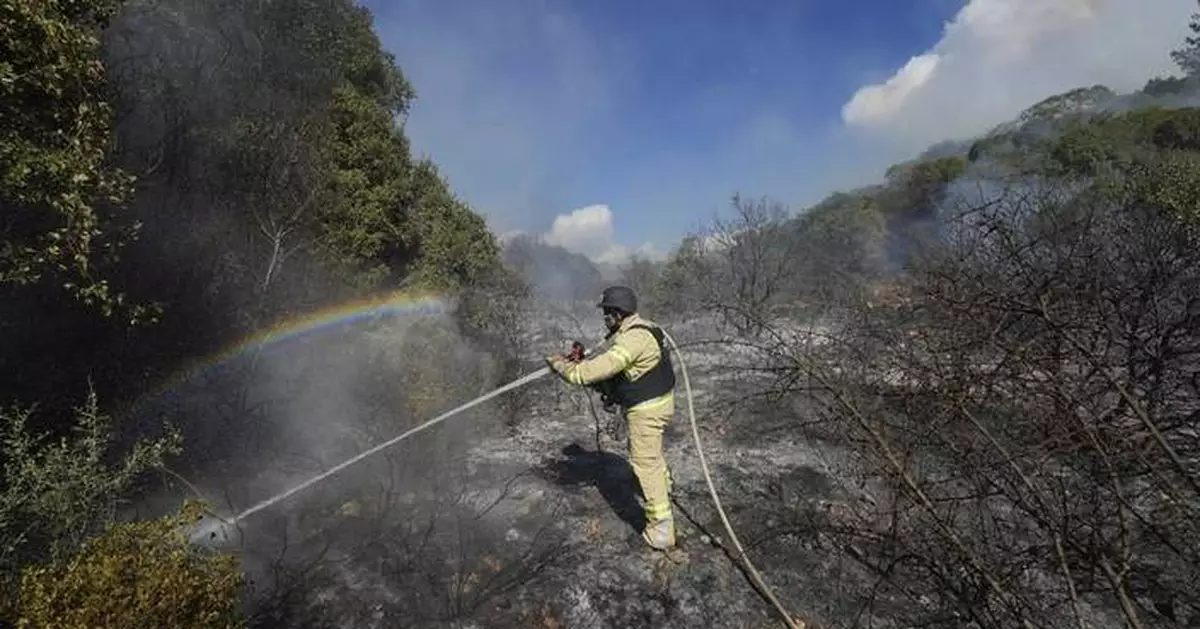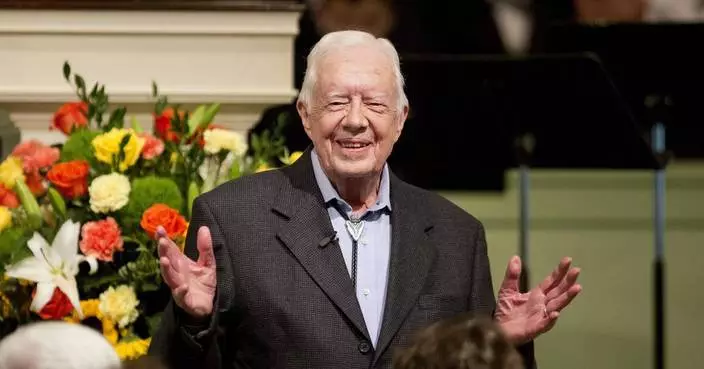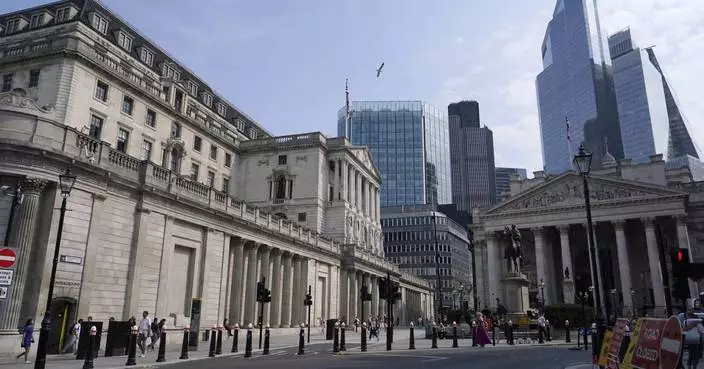JERUSALEM (AP) — With Israel's defense minister announcing a “new phase” of the war and an apparent Israeli attack setting off explosions in electronic devices in Lebanon, the specter of all-out combat between Israel and Hezbollah seems closer than ever before.
Hopes for a diplomatic solution to the conflict appear to be fading quickly as Israel signals a desire to change the status quo in the country's north, where it has exchanged cross-border fire with Hezbollah since the Lebanese militant group began attacking on Oct. 8, a day after the war's opening salvo by Hamas.
Click to Gallery
JERUSALEM (AP) — With Israel's defense minister announcing a “new phase” of the war and an apparent Israeli attack setting off explosions in electronic devices in Lebanon, the specter of all-out combat between Israel and Hezbollah seems closer than ever before.
Hezbollah fighters salute as they stand next to the coffins of four victims who were killed Tuesday after their handheld pagers exploded, during their funeral procession in the southern suburb of Beirut, Lebanon, Wednesday, Sept. 18, 2024. (AP Photo/Bilal Hussein)
Hezbollah fighters carry one of the coffins of four fallen comrades who were killed Tuesday after their handheld pagers exploded, in the southern suburb of Beirut, Lebanon, Wednesday, Sept. 18, 2024. (AP Photo/Bilal Hussein)
Israeli firefighters work to extinguish a fire after a rocket fired from Lebanon hit an open field in northern Israel, Wednesday, Sept. 18, 2024. (AP Photo/Baz Ratner)
An Israeli firefighter works to extinguish a fire after a rocket fired from Lebanon hit an open field in northern Israel, Wednesday, Sept. 18, 2024. (AP Photo/Baz Ratner)
In recent days, Israel has moved a powerful fighting force up to the northern border, officials have escalated their rhetoric, and the country’s security Cabinet has designated the return of tens of thousands of displaced residents to their homes in northern Israel an official war goal.
Here's a look at how Israel is preparing for a war with Lebanon:
While the daily fighting between Israel and Hezbollah has escalated on several occasions, the bitter enemies have been careful to avoid an all-out war.
That appears to be changing — especially after pagers, walkie-talkies and other devices exploded in Lebanon on Tuesday and Wednesday, killing at least 20 and wounding thousands in a sophisticated attack Hezbollah blamed on Israel.
“You don’t do something like that, hit thousands of people, and think war is not coming,” said retired Israeli Brig. Gen. Amir Avivi, who leads Israel Defense and Security Forum, a group of hawkish former military commanders. “Why didn't we do it for 11 months? Because we were not willing to go to war yet. What’s happening now? Israel is ready for war."
As fighting in Gaza has slowed, Israel has fortified forces along the border with Lebanon, including the arrival this week of a powerful army division that took part in some of the heaviest fighting in Gaza.
The 98th Division is believed to include thousands of troops, including paratrooper infantry units and artillery and elite commando forces specially trained for operations behind enemy lines. Their deployment was confirmed by an official with knowledge of the matter who spoke on the condition of anonymity to discuss troop movements.
The division played a key role in Gaza, spearheading the army's operations in the southern city of Khan Younis, a Hamas stronghold. The offensive inflicted heavy losses on Hamas fighters and tunnels, but also wreaked massive damage, sent thousands of Palestinians fleeing and resulted in scores of civilian deaths. Israel says Hamas endangers civilians by hiding in residential areas.
The military also said it staged a series of drills this week along the border.
"The mission is clear," said Maj. Gen. Ori Gordin, who heads Israel's Northern Command. “We are determined to change the security reality as soon as possible.”
The military movements have been accompanied by heightened rhetoric from Israel's leaders, who say their patience is running thin.
Defense Minister Yoav Gallant on Wednesday night declared the start of a “ new phase” of the war as Israel turns its focus toward Hezbollah. "The center of gravity is shifting to the north by diverting resources and forces,” he said.
He spoke a day after Israel's Cabinet made the return of displaced residents to their homes in northern Israel a formal goal of the war. The move was largely symbolic — Israeli leaders have long pledged to bring those residents home. But elevating the significance of the aim signaled a tougher stance.
After meeting Wednesday with top security officials, Prime Minister Benjamin Netanyahu declared: “We will return the residents of the north securely to their homes.”
Netanyahu delivered a similarly tough message with a top U.S. envoy sent to the region this week to soothe tensions.
An official with knowledge of the encounter told The Associated Press that the envoy, Amos Hochstein, told Netanyahu that intensifying the conflict with Hezbollah would not help return evacuated Israelis back home.
Netanyahu, according to a statement from his office, told Hochstein that residents cannot return without “a fundamental change in the security situation in the north." The statement said that while Netanyahu “appreciates and respects” U.S. support, Israel will “do what is necessary to safeguard its security.”
Israeli media reported Wednesday that the government has not yet decided whether to launch a major offensive in Lebanon.
Much, it seems, will depend on Hezbollah's response. The group's leader, Hassan Nasrallah, is expected to deliver a major speech on Thursday.
But public sentiment in Israel seems to be supportive of tougher action against Hezbollah.
A poll in late August by the Israeli Democracy Institute, a Jerusalem think tank, found that 67% of Jewish respondents thought Israel should intensify its response to Hezbollah. That includes 46% of Jewish respondents who believed Israel should launch a deep offensive striking Lebanese infrastructure, and 21% who seek an intensified response that avoids striking Hezbollah infrastructure.
“There’s a lot of pressure from the society to go to war and win,” said Avivi, the retired general. “Unless Hezbollah tomorrow morning says, ’OK, we got the message. We’re pulling out of south Lebanon,' war is imminent.”
Such a war would almost certainly prove devastating to both sides.
Already, more than 500 people have been killed in Lebanon by Israeli strikes since Oct. 8, most of them fighters with Hezbollah and other armed groups but also more than 100 civilians. In northern Israel, at least 23 soldiers and 26 civilians have been killed by strikes from Lebanon.
Israel inflicted heavy damage on Lebanon during a monthlong war against Hezbollah in 2006 that ended in a stalemate. Israeli leaders have threatened even tougher action this time around, vowing to repeat the scenes of destruction from Gaza in Lebanon.
But Hezbollah also has built up its capabilities since 2006. Hezbollah has an estimated 150,000 rockets and missiles, some believed to have guidance systems that could threaten sensitive targets in Israel. It has also developed an increasingly sophisticated fleet of drones.
Capable of striking all parts of Israel, Hezbollah could bring life in Israel to a standstill and send hundreds of thousands of Israelis fleeing.
Associated Press Writer Natalie Melzer in Jerusalem contributed to this report.
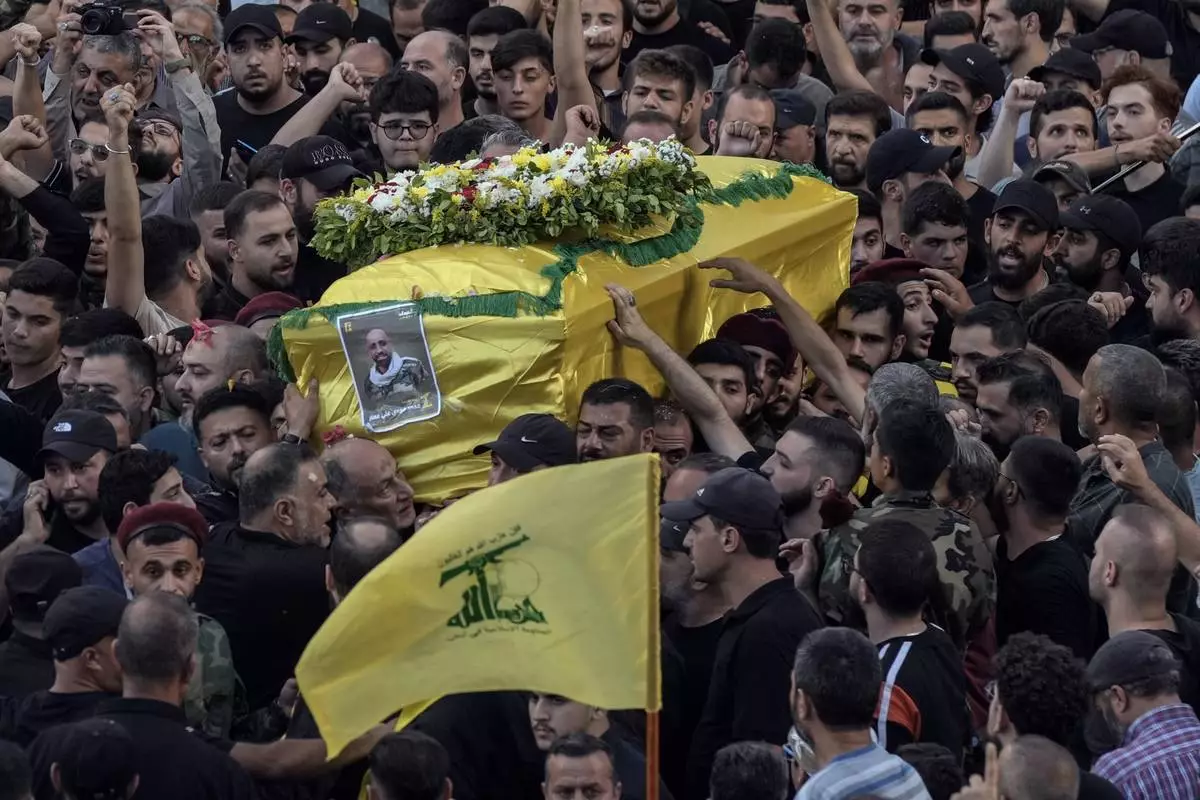
Mourners carry the coffin of Mohammed Mahdi, son of Hezbollah legislator Ali Ammar, who was killed Tuesday after his handheld pager exploded, in the southern suburb of Beirut, Lebanon, Wednesday, Sept. 18, 2024. (AP Photo/Bilal Hussein)
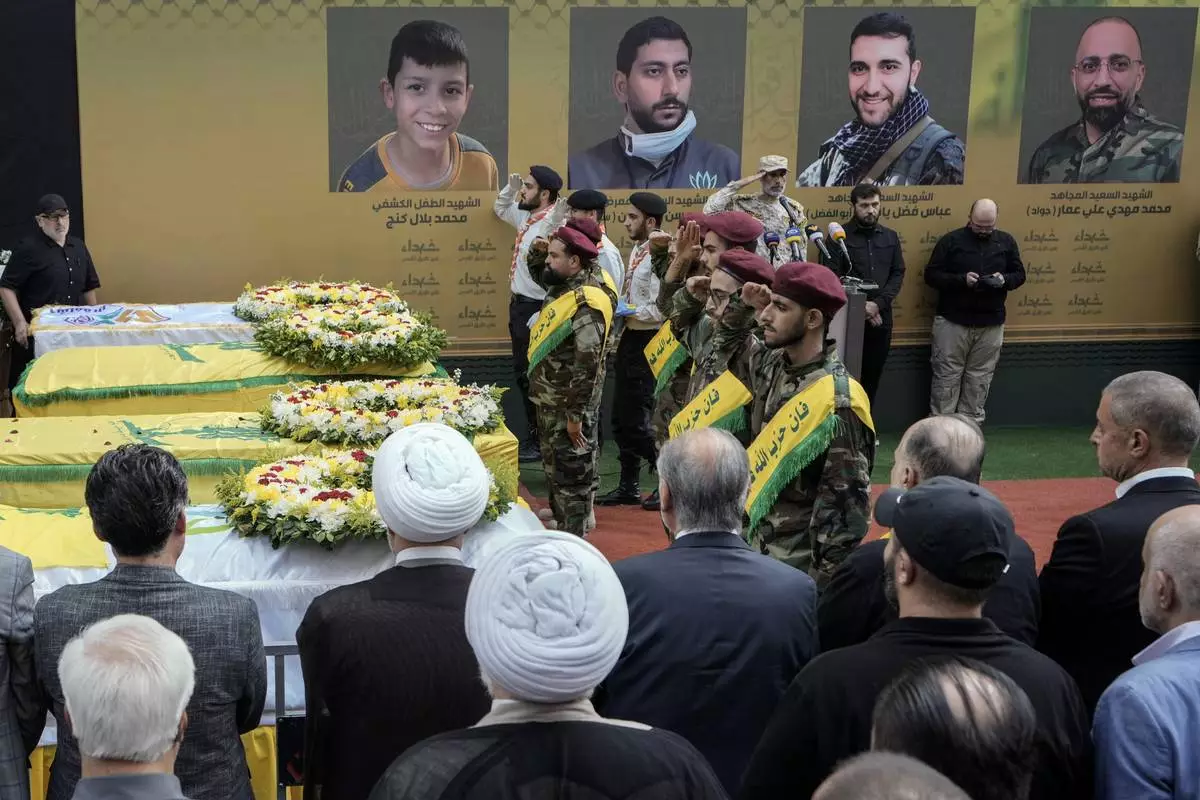
Hezbollah fighters salute as they stand next to the coffins of four victims who were killed Tuesday after their handheld pagers exploded, during their funeral procession in the southern suburb of Beirut, Lebanon, Wednesday, Sept. 18, 2024. (AP Photo/Bilal Hussein)
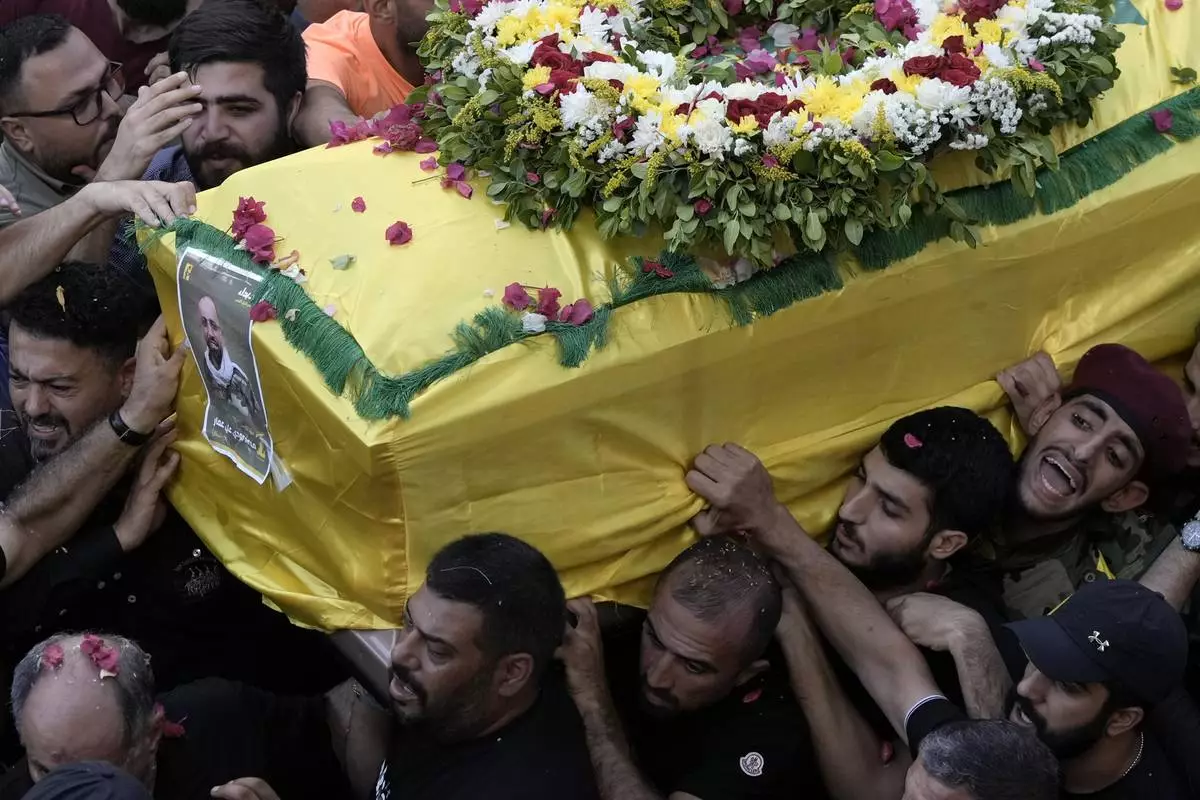
Hezbollah fighters carry one of the coffins of four fallen comrades who were killed Tuesday after their handheld pagers exploded, in the southern suburb of Beirut, Lebanon, Wednesday, Sept. 18, 2024. (AP Photo/Bilal Hussein)
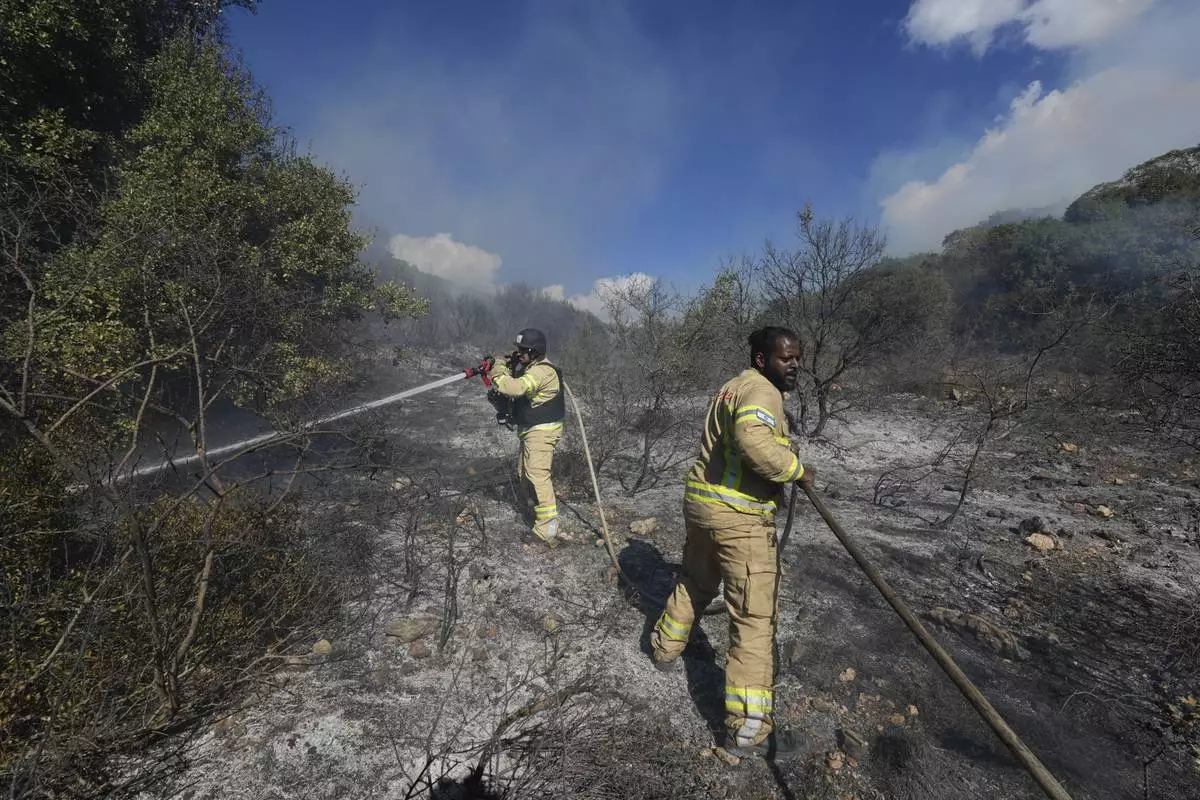
Israeli firefighters work to extinguish a fire after a rocket fired from Lebanon hit an open field in northern Israel, Wednesday, Sept. 18, 2024. (AP Photo/Baz Ratner)
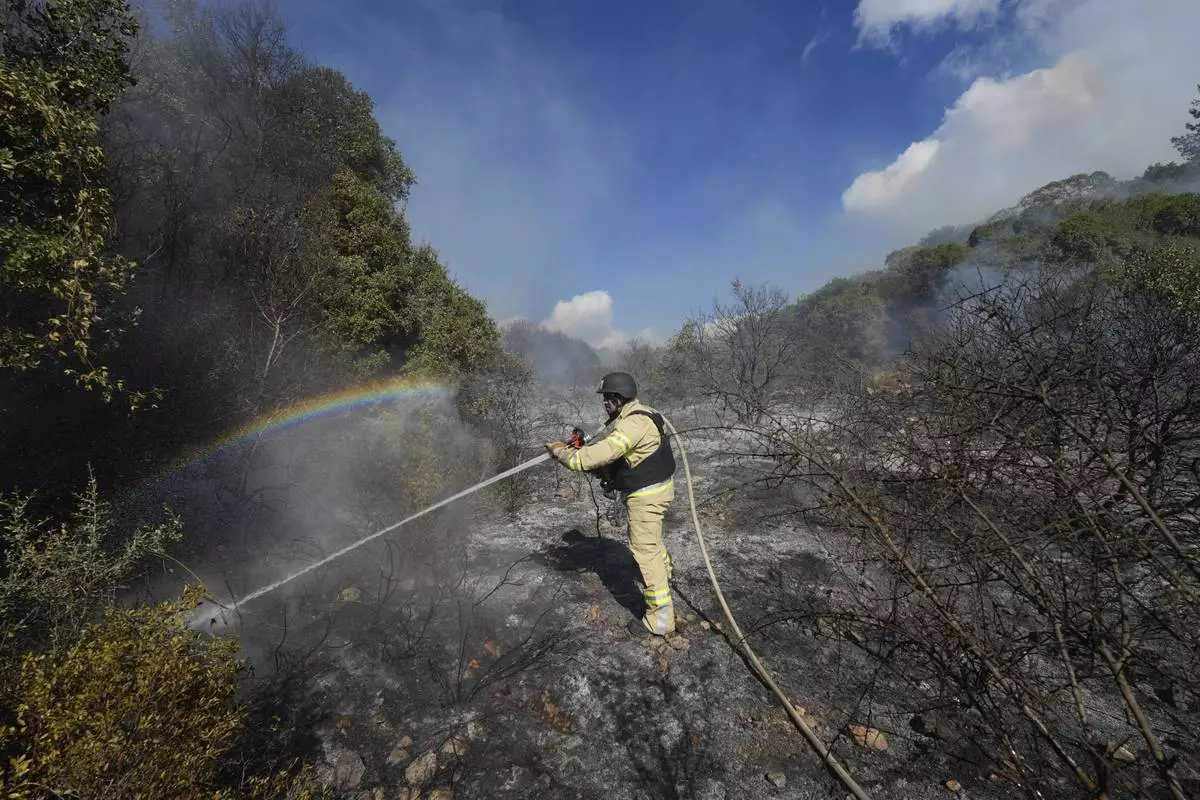
An Israeli firefighter works to extinguish a fire after a rocket fired from Lebanon hit an open field in northern Israel, Wednesday, Sept. 18, 2024. (AP Photo/Baz Ratner)
VATICAN CITY (AP) — The Vatican on Thursday gave the green light for Catholics to continue flocking to a southern Bosnian village where children reported seeing visions of the Virgin Mary, offering its approval for devotion in one of the most contested aspects of Roman Catholic practice in recent years.
In a detailed analysis after nearly 15 years of study, the Vatican’s doctrine office didn’t declare that the reported apparitions in Medjugorje were authentic or of supernatural origin. And it flagged concerns about contradictions in some of the “messages” the alleged visionaries say they have received over the years.
But in line with new Vatican criteria in place this year, the Dicastery for the Doctrine of the Faith ruled that the “spiritual fruits” stemming from the Medjugorje experience more than justified allowing the faithful to organize pilgrimages there and permit public acts of devotion.
The decision essentially overrules the original doubts about the alleged apparitions at Medjugorje by the region’s past diocesan bishops. And it ignores current concerns about the economic interests that have turned Medjugorje into a thriving destination for religious tourists.
But with Pope Francis’ approval, the doctrine office decided that “the abundant and widespread fruits, which are so beautiful and positive,” justified its decision. It said doing so “highlights that the Holy Spirit is acting fruitfully for the good of the faithful in the midst of this spiritual phenomenon.”
In 1981, six children and teenagers reported seeing visions of the Madonna on a hill in the village of Medjugorje, located in the wine-making region of southern Bosnia. Some of those original “seers” have claimed the visions have occurred regularly since then, even daily, and that Mary sends them messages.
As a result, Medjugorje has become a major European pilgrimage destination for Christian believers, attracting millions of people over the years. Last year alone, 1.7 million Eucharistic wafers were distributed during Masses there, according to statistics published on the shrine’s website, a rough estimate of the numbers of Catholics who visited.
However, unlike at the more well-known and established Catholic sanctuaries in Fatima, Portugal or Lourdes, France, the alleged apparitions at Medjugorje were never declared authentic by the Vatican.
And over the years, the area’s local diocesan bishops and some Vatican officials had cast doubt on the reliability and motivations of the “seers,” because of concerns that economic interests may have been driving their reports of continued visions.
Even Francis in 2017 expressed doubts about their messages, saying “I prefer Our Lady to be a mother, our mother, and not a telegraph operator who sends out a message every day at a certain time,” he told an air-borne press conference.
Religious tourism has become an important part of the local economy, with an entire industry catering to pilgrims: hotels, private accommodations, family-run farm businesses, even sports complexes and camping sites. Their growth has contributed to the surrounding municipality’s financial well-being after the Bosnian war in the 1990s devastated the economy.
In its assessment, the Vatican doctrine office recalled that in May of this year it announced it was no longer in the business of authenticating alleged apparitions and other supposedly supernatural phenomena that have attracted Catholics for centuries, including statues that allegedly weep blood or stigmatas that are said to erupt spontaneously on hands or feet.
The new criteria envisage six main outcomes, with the most favorable being that the church issues a noncommittal doctrinal green light, a so-called “nihil obstat,” which means there is nothing about the event that is contrary to the faith, and therefore Catholics can express devotion to it.
With Francis’ approval, the Vatican on Thursday gave that “nihil obstat” to Medjugorje.
In its analysis, the Vatican listed what it called the many spiritual benefits that have been associated with pilgrimages to the site, including people deciding that they want to become priests or nuns, couples reconciling after troubles in marriage, healings after prayer and new works of charity caring for orphans and drug addicts.
It listed no example of any negative experiences associated with Medjugorje, or reference to concerns raised by previous diocesan bishops of Mostar who had declared the apparitions were false.
Nor did it mention that the priest most closely associated with Medjugorje and the six “visionaries” was defrocked by the Vatican in 2009 for, among other things, spreading false doctrine.
The Vatican did seem to want to distance the place from the people behind the alleged apparitions, stressing that these benefits haven’t occurred as a result of meetings with the alleged visionaries but rather “in the context of pilgrimages to the places associated with the original events.”
And in its 17-page document, it used nearly four pages to list concerns about problems in some of the thousands of individual messages the alleged visionaries have received, including cases where the message contradicted aspects of Catholic doctrine.
The decision will surely impact Medjugorje, which lies in the municipality of Citluk, one of the smallest in Bosnia with some 18,000 residents but economically well-off. The municipality has declared that tourism is key for its development, largely thanks to Medjugorje, and hosts various festivals and gatherings each year organized by Christian humanitarian organizations drawn to the place.
Municipal workers say 2024 could be a record year, because Christian pilgrims are tending to stay away from Israel because of the war, and are opting for Medjugorje instead.
“Medjugorje means a lot, all economic sectors lean on Medjugorje,” said Ante Kozina, the tourism association chief. “It is a growth generator for the entire municipality.”
Gec contributed from Belgrade, Serbia.
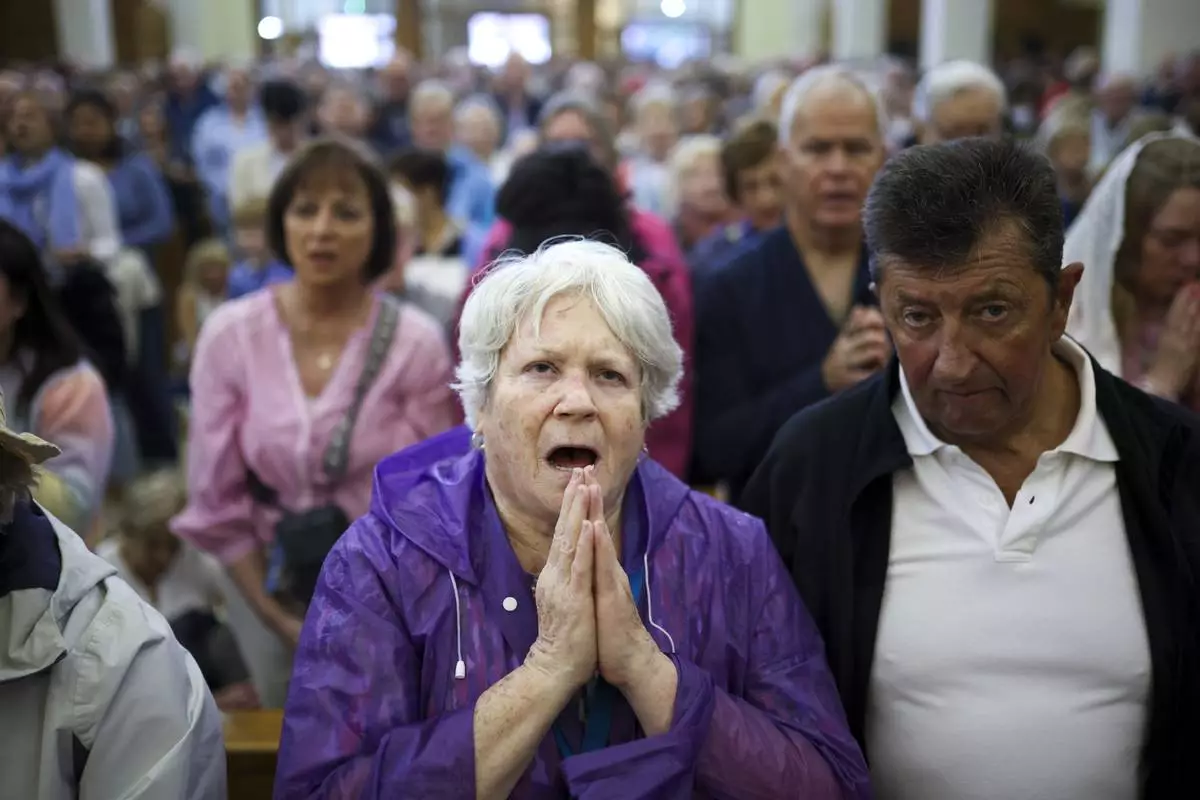
Pilgrims say their prayers inside the St. James Church in Medjugorje, Bosnia, Thursday, Sept. 19, 2024. (AP Photo/Armin Durgut)
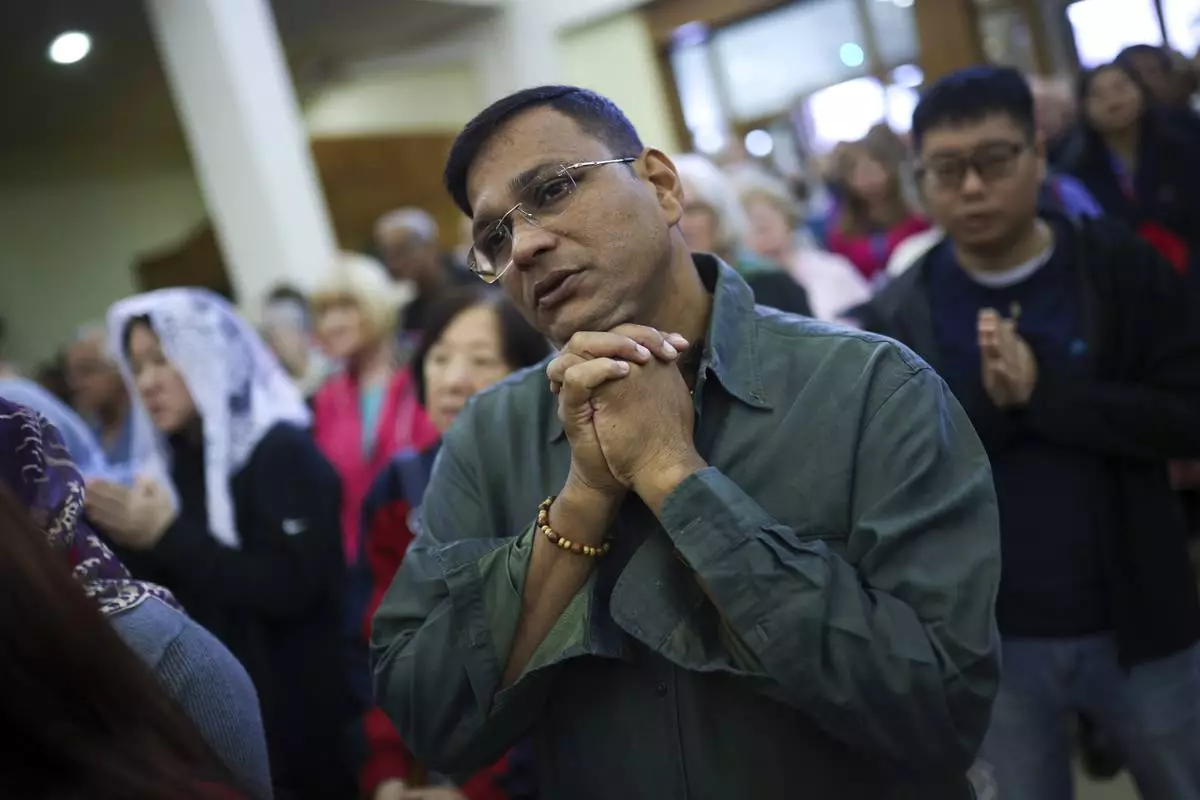
Pilgrims say their prayers inside the St. James Church in Medjugorje, Bosnia, Thursday, Sept. 19, 2024. (AP Photo/Armin Durgut)

Pilgrims say their prayers inside the St. James Church in Medjugorje, Bosnia, Thursday, Sept. 19, 2024. (AP Photo/Armin Durgut)
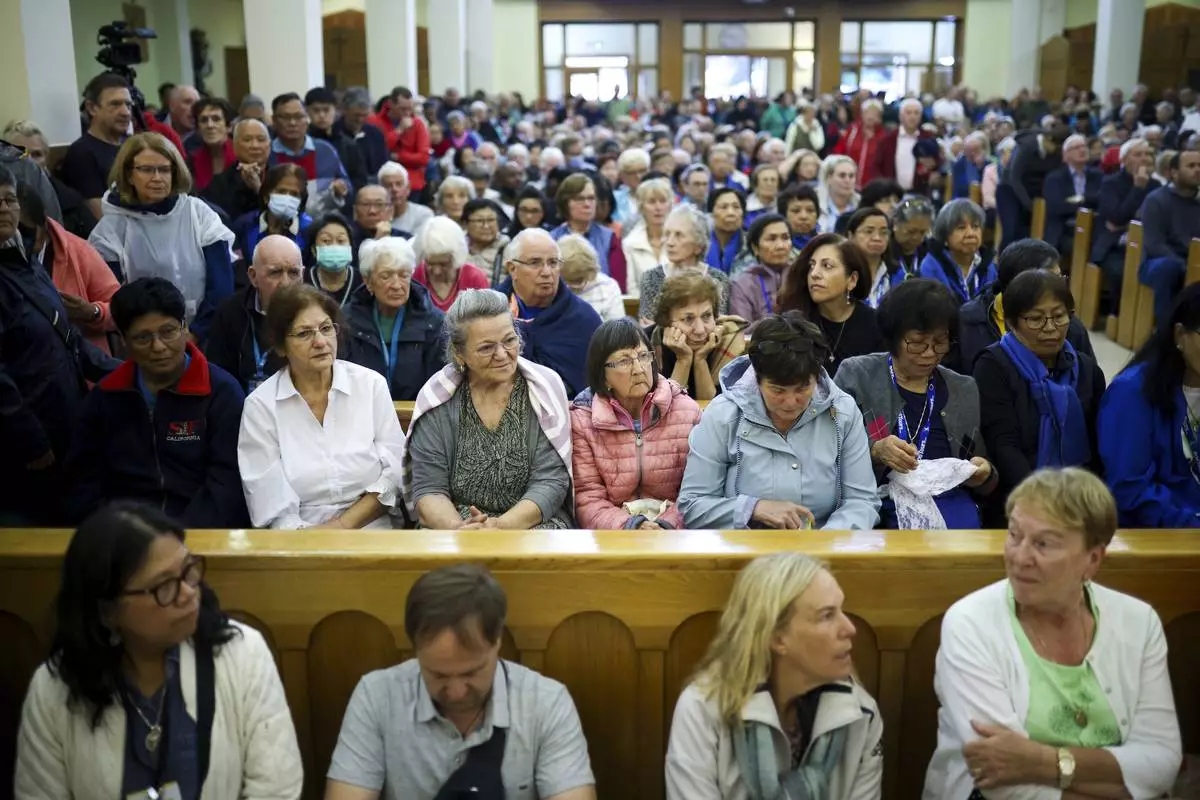
Pilgrims say their prayers inside the St. James Church in Medjugorje, Bosnia, Thursday, Sept. 19, 2024. (AP Photo/Armin Durgut)
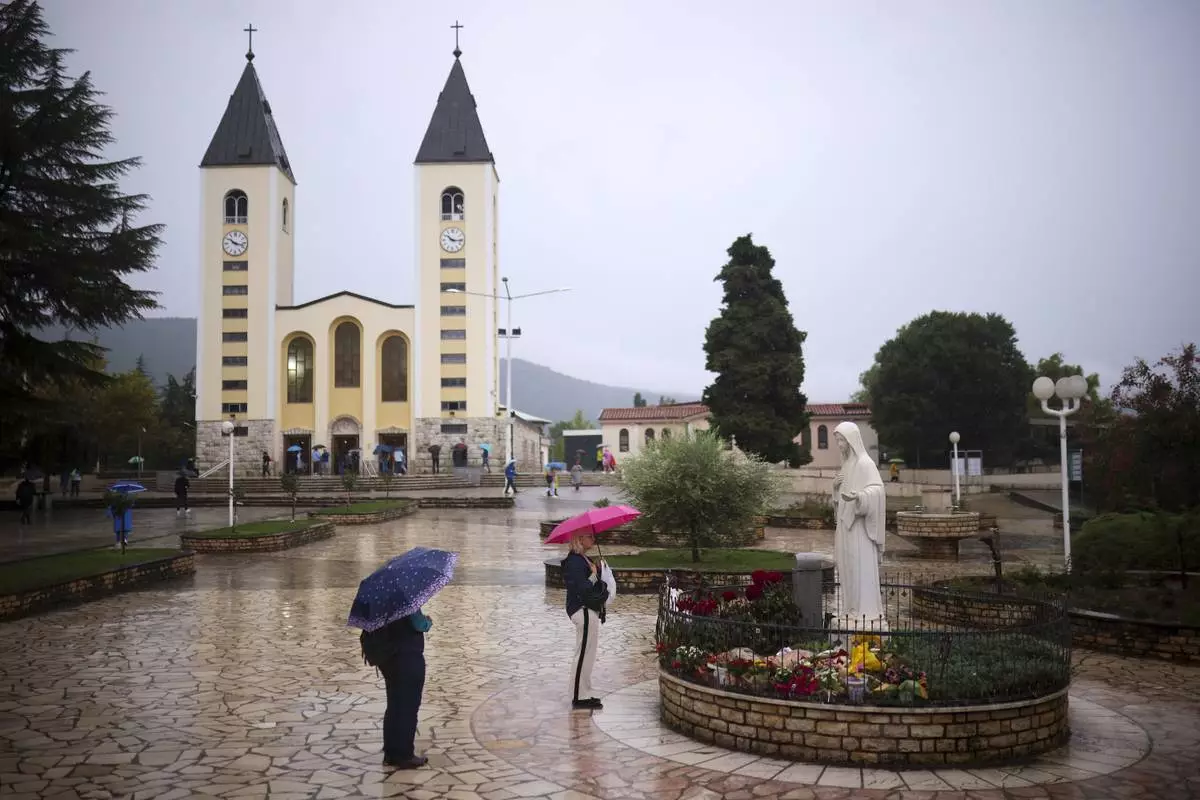
Pilgrims say their prayers next to the statue of the Virgin Mary in Medjugorje, Bosnia, Thursday, Sept. 19, 2024. (AP Photo/Armin Durgut)
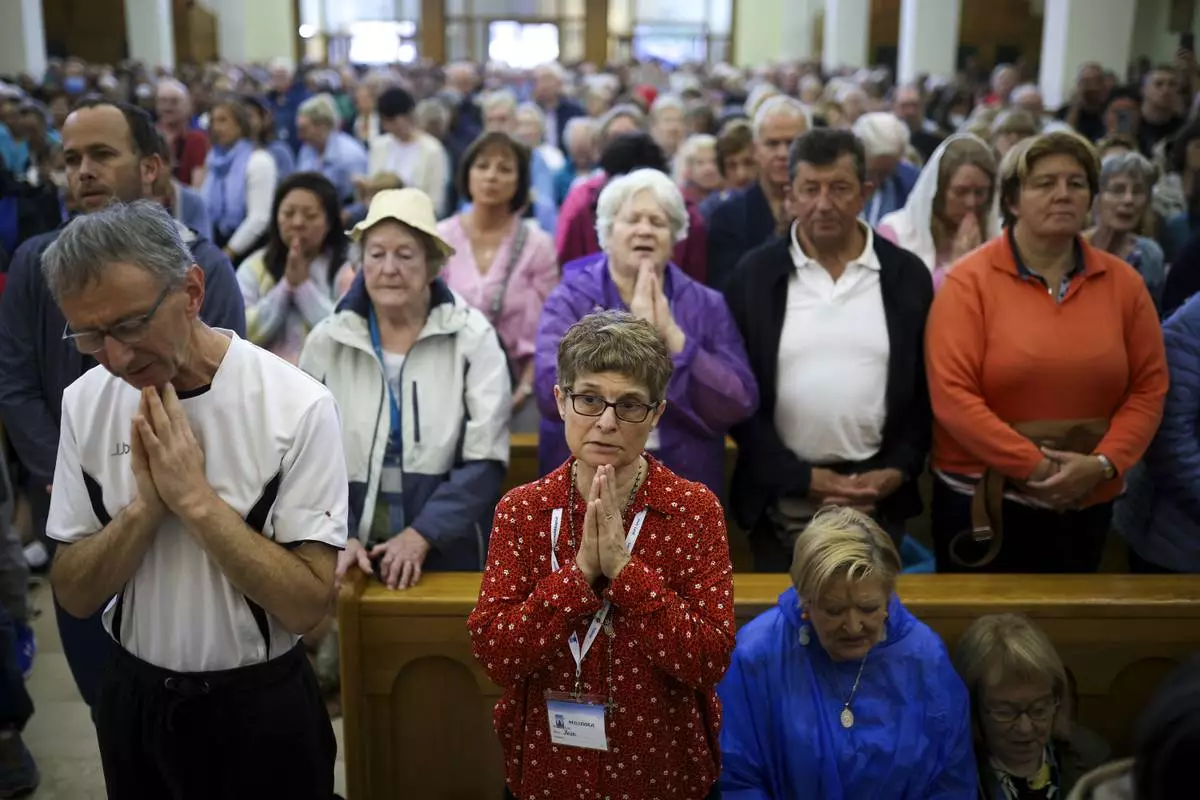
Pilgrims say their prayers inside the St. James Church in Medjugorje, Bosnia, Thursday, Sept. 19, 2024. (AP Photo/Armin Durgut)

Pilgrims say their prayers inside the St. James Church in Medjugorje, Bosnia, Thursday, Sept. 19, 2024. (AP Photo/Armin Durgut)
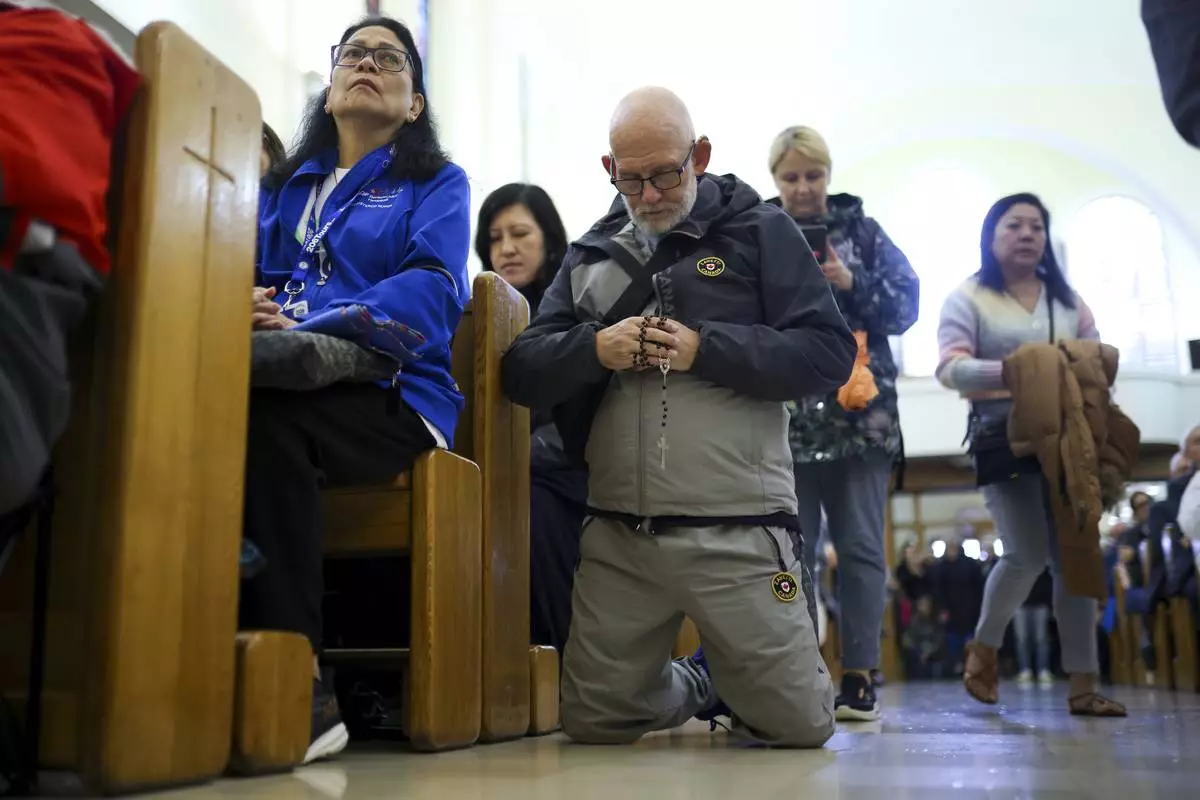
Pilgrims say their prayers inside the St. James Church in Medjugorje, Bosnia, Thursday, Sept. 19, 2024. (AP Photo/Armin Durgut)
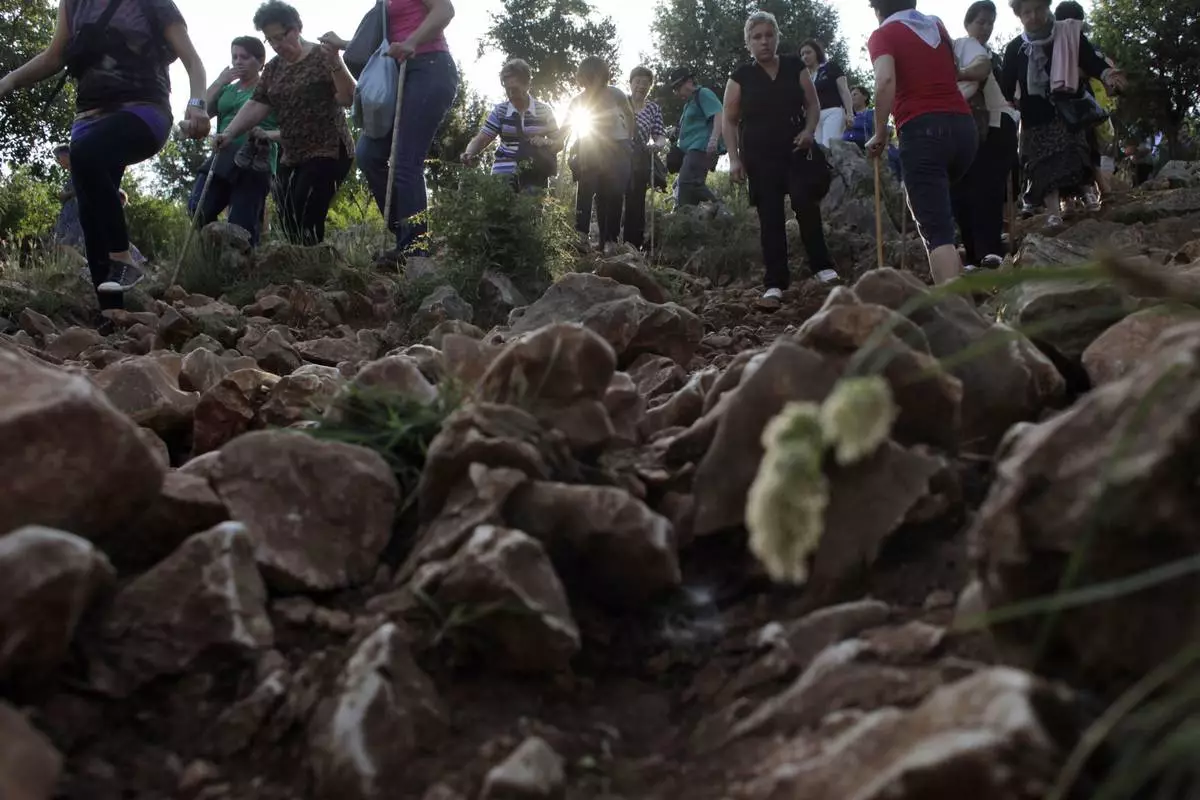
FILE - Pilgrims walk on a rocky terrain to say their prayers on the Hill Of Appearance in Medjugorje, 100 kilometers south of Sarajevo, June 25, 2012. (AP Photo/Amel Emric, File)
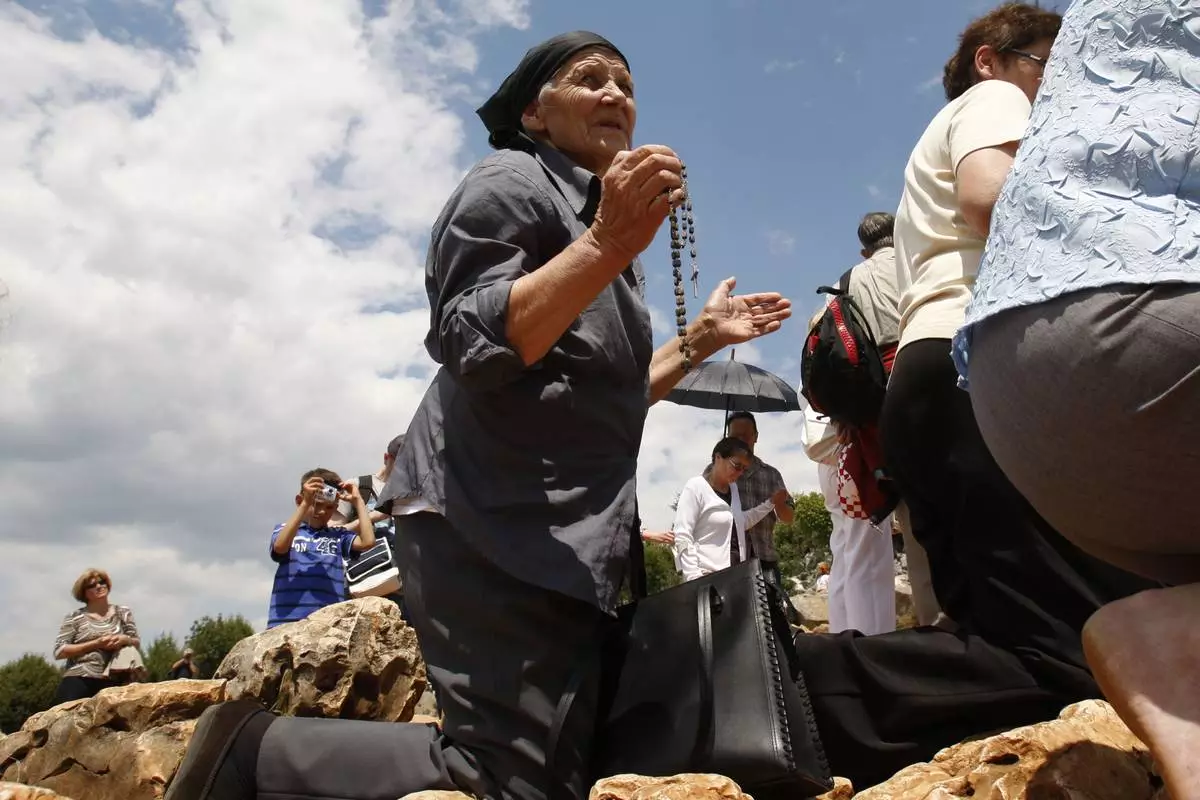
FILE - Pilgrims prays at the "Hill of Apparitions" in the southern-Bosnian town of Medjugorje, 100 kilometers south of Sarajevo, June 25, 2010. (AP Photo/Amel Emric, File)
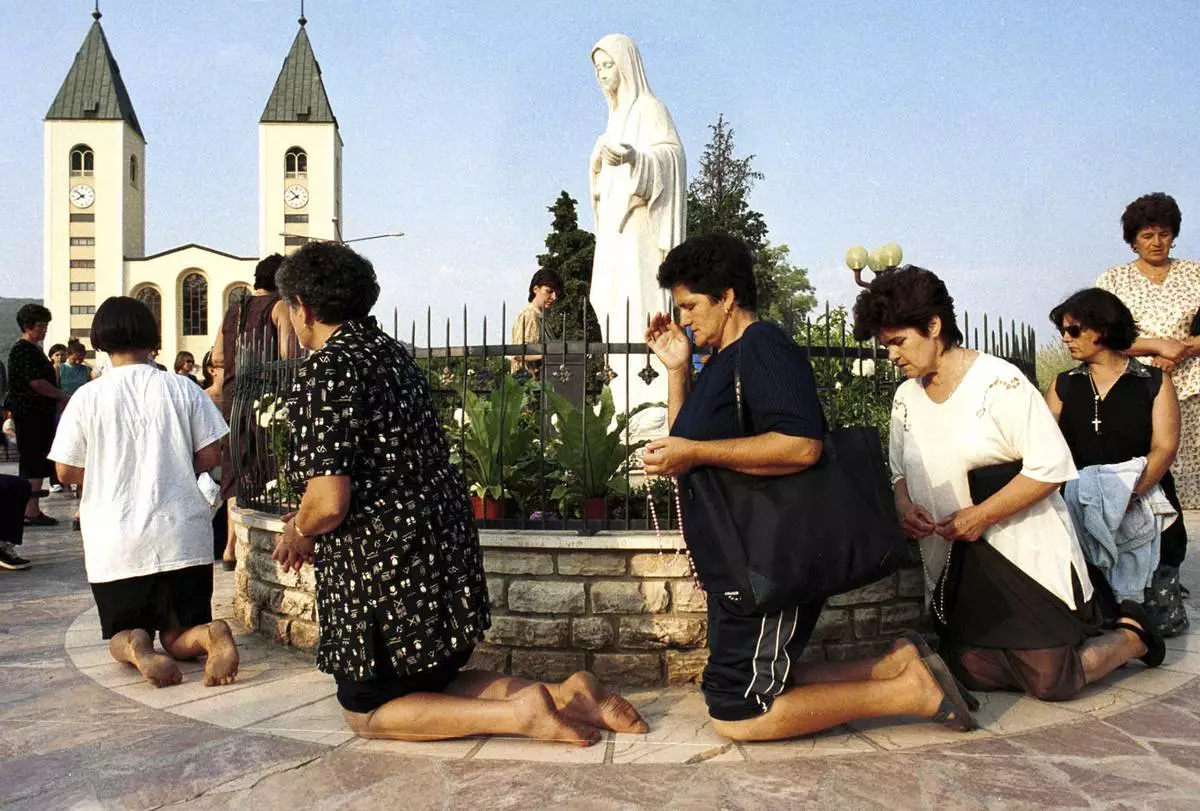
FILE - Bosnian Roman Catholic women pray on the occasion of the feast of the Assumption in Medjugorje, some 120 kilometers (75 miles) south of the Bosnian capital, Sarajevo, on Aug. 15, 2000. (AP Photo/Hidajet Delic, File)







